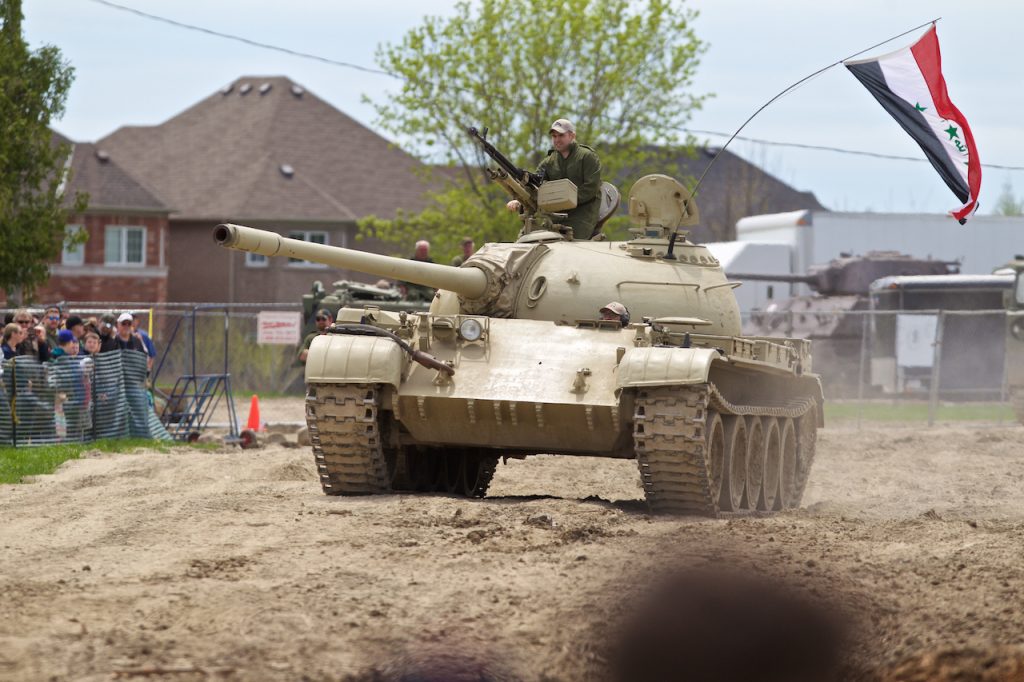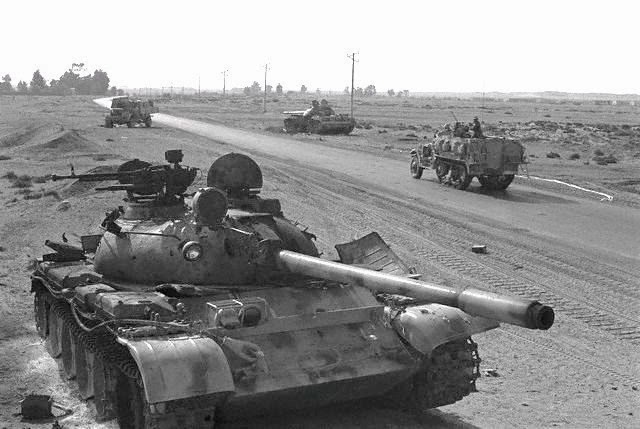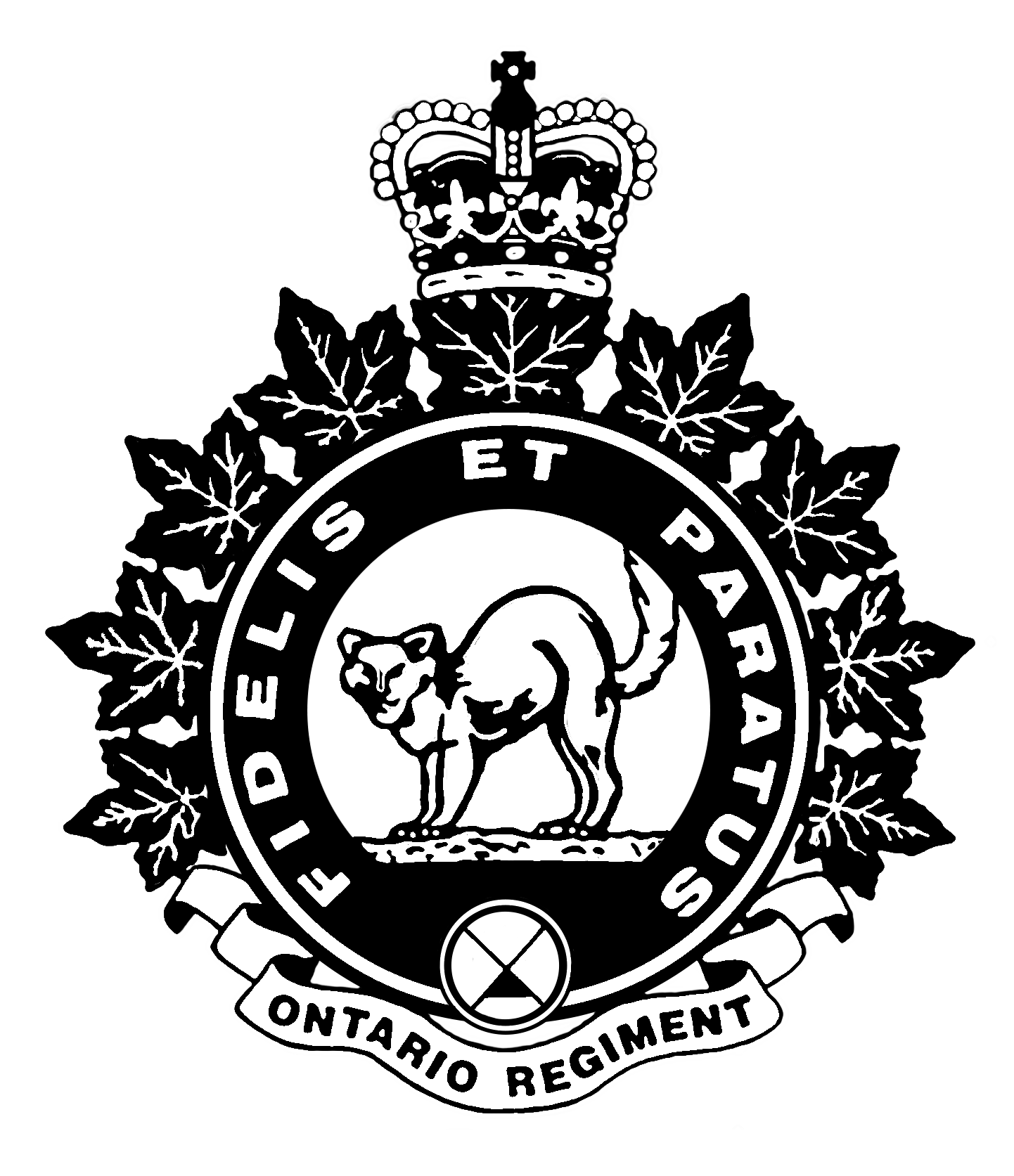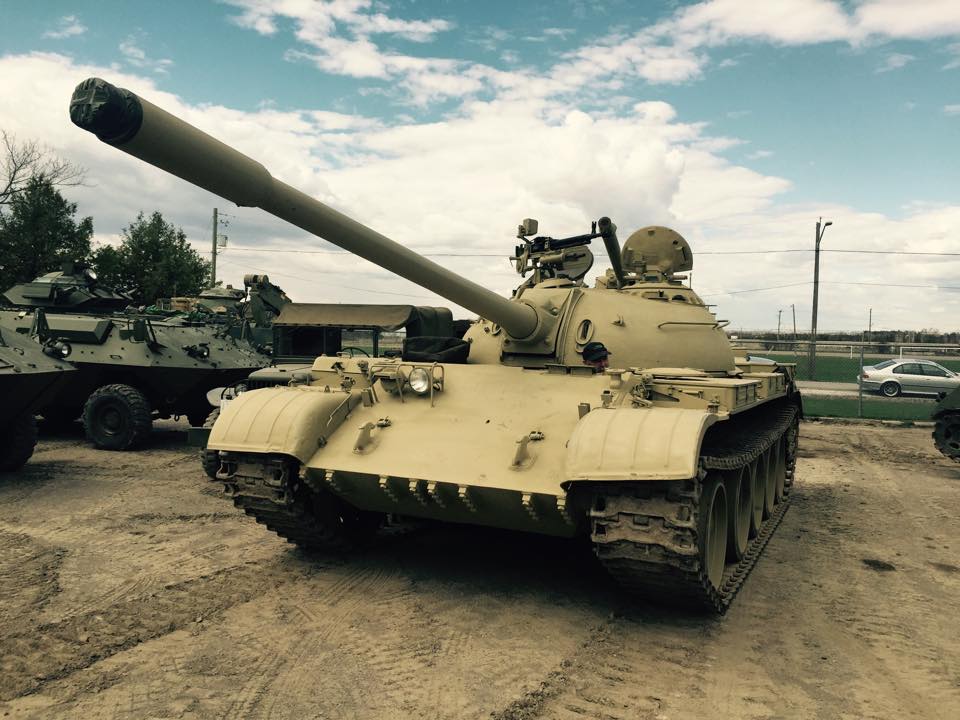Quick Facts:
Dimensions (L-W-H): 9m X 2.4m X 3.4m
Total weight (Battle) : 36,000 kg
Crew: 4 (Driver, Loader, Gunner, Commander)
Propulsion: V-12 Diesel, 520 hp
Speed: 48 km/h
Suspension: Torsion Bar
Range: 600 km
Armament: 100 mm rifled gun, 2 X 7.62mm MG, 12.7mm MG
Armor: 200 mm cast (Turret Front) to 20mm steel (Hull Rear)

The T-54 is a direct descendant of the venerable T-34 of World War II. After the war, the USSR desired a newer and more powerful tank. There was a T-44 model but only a few were made and there were many deficiencies in it. The T-54 was built around a new turret holding a 100mm rifled gun and was mated to a T-44 hull. Like the T-34, the T-54 has no turret basket and the crew must move with the gun if the turret traverses.
The T-54 entered into production and there were three sub models built over time; T-54-1 1949, T-54-2 1949, T-54-3 1951. During these models, the turret was upgraded, machine guns moved and the entire tank modernized. However, in 1952 a new version T-54A was released with a new main gun with vertical stabilization, IR searchlight and IR vision. Its snorkel and its bilge pump made it the first tank that could operate while being completely submerged. In 1957, the T-54B was released with a newer gun with two axis stabilization and updated electronics.
The driving force behind the development and production of the T-55 was the ability to function on the Nuclear Battlefield. Although a full NBC (Nuclear, Biological, Chemical) protection suite was planned; only minimal radiation was added. Other changes included a more powerful engine, and upgraded firing systems. The T-55 went into full production in 1958. In 1961, the T-55A was introduced with a full overpressure and filtration system for NBC protection.
The T-54/55 were produced by USSR, Poland, and Czechoslovakia. Upgrades and modification have been and are continual even today. During the 1970s, the T-54/55 and the T-62 represented 85% of Soviet Tank forces and was exported to many countries.
The first test of battle for the T-54/55 was the Hungarian Revolution. In 1956, Hungarian revolutionaries captured a T-54 and delivered it to the British Embassy; which led to the British development of the 105mm gun specifically to defeat the armour of the T-54.

In the Middle East, the T-54/55s of the Egyptian army were defeated by the combined M48s, Centurions, and M4s of the Israeli army during the Six Day War (1967). Superior tactics, logistics, and planning may have led to the victories but the T-54/55s lost their aura of invincibility. The T-54/55s also saw action in the Jordanian Civil War, Yom Kippur War, Lebanese Civil War, Iran-Iraq, Desert Shield/Storm and the Gulf War. During the Yom Kippur war, Israel captured so many T-54/55s that they modified them by using a GM Diesel and the NATO standard 105 guns. These were known as the Tiran-5 which Israel used as a reserve/militia tank until the mid-1990s.
The T-54/55 has been used in almost every conflict from the mid 1950s to present. This include both national and non-state actors such as ISIS and revolutionary/terrorist groups.
T-54/55 copies were manufactured by China as Type-59 tanks.
The Museum has one T-54 operational tank. This tank was captured in Iraq and exported to England where it was then acquired by the Museum.


